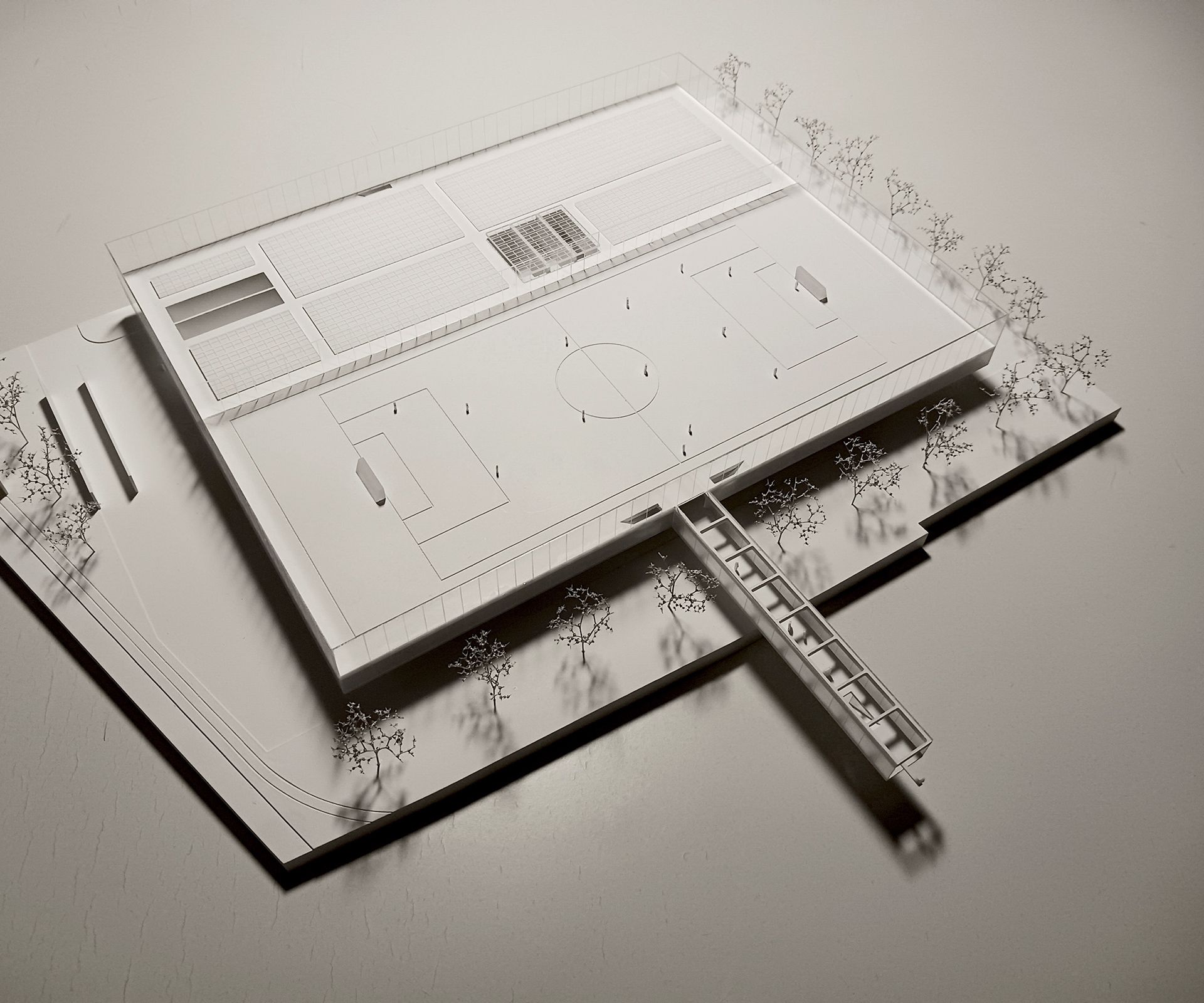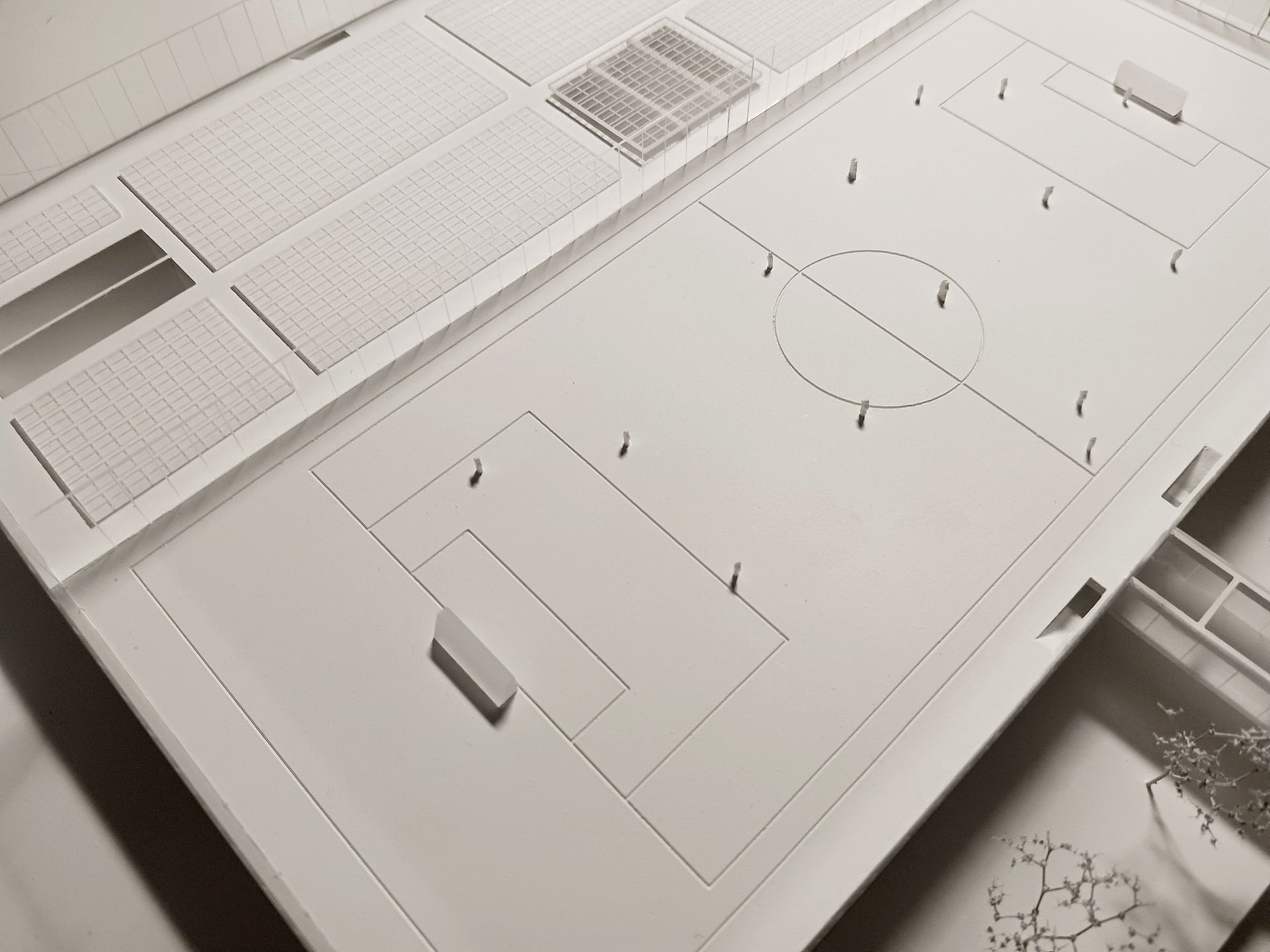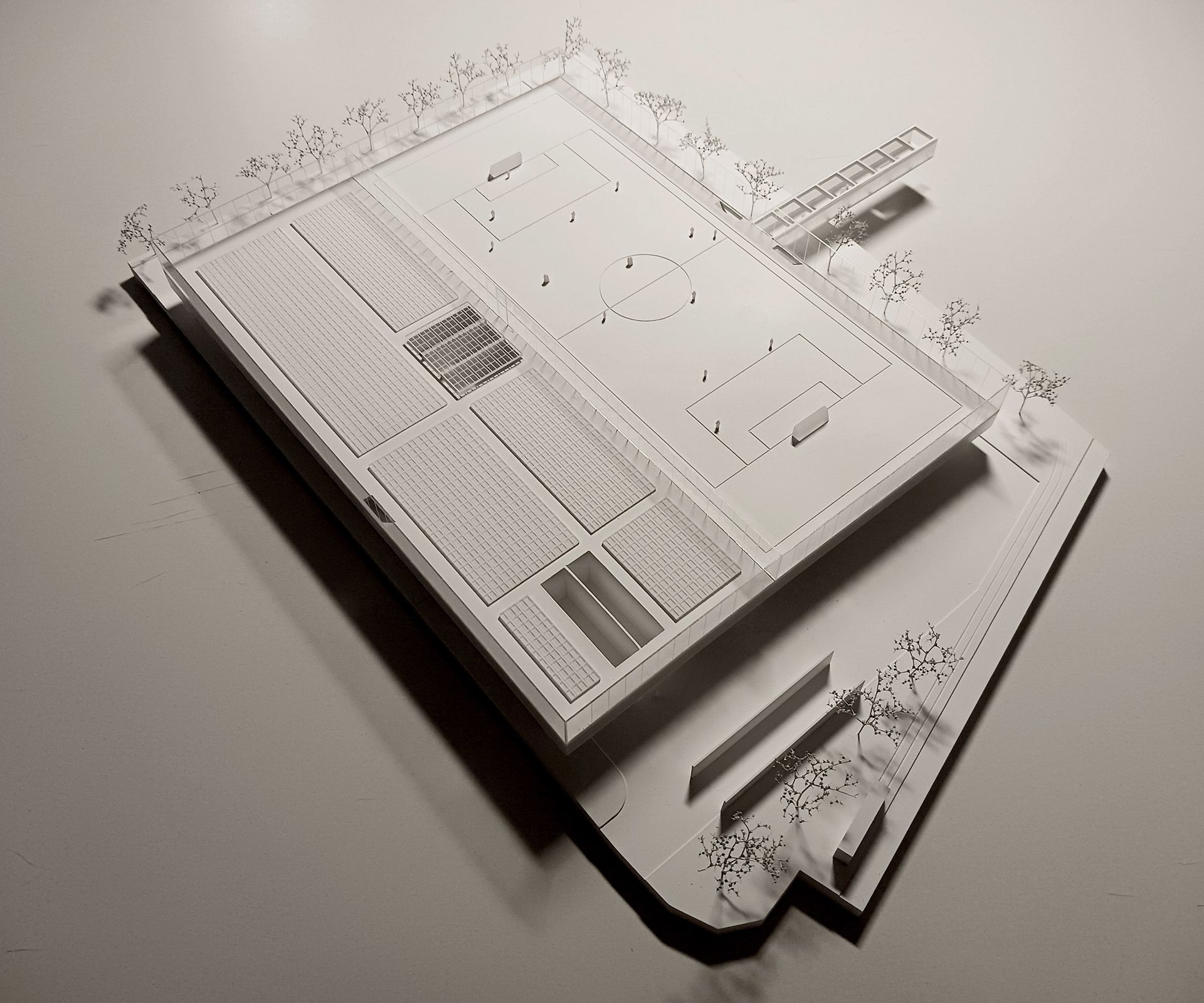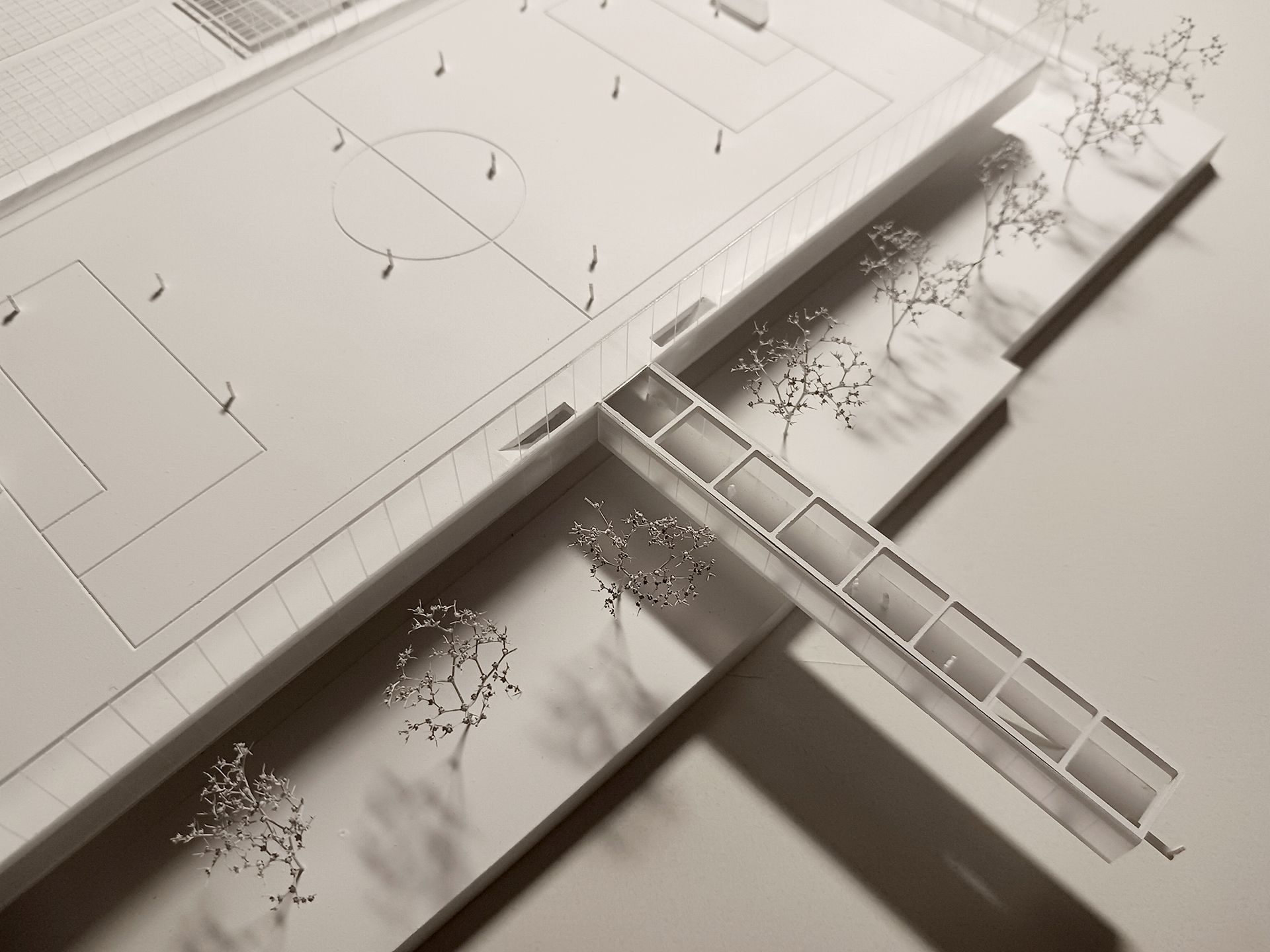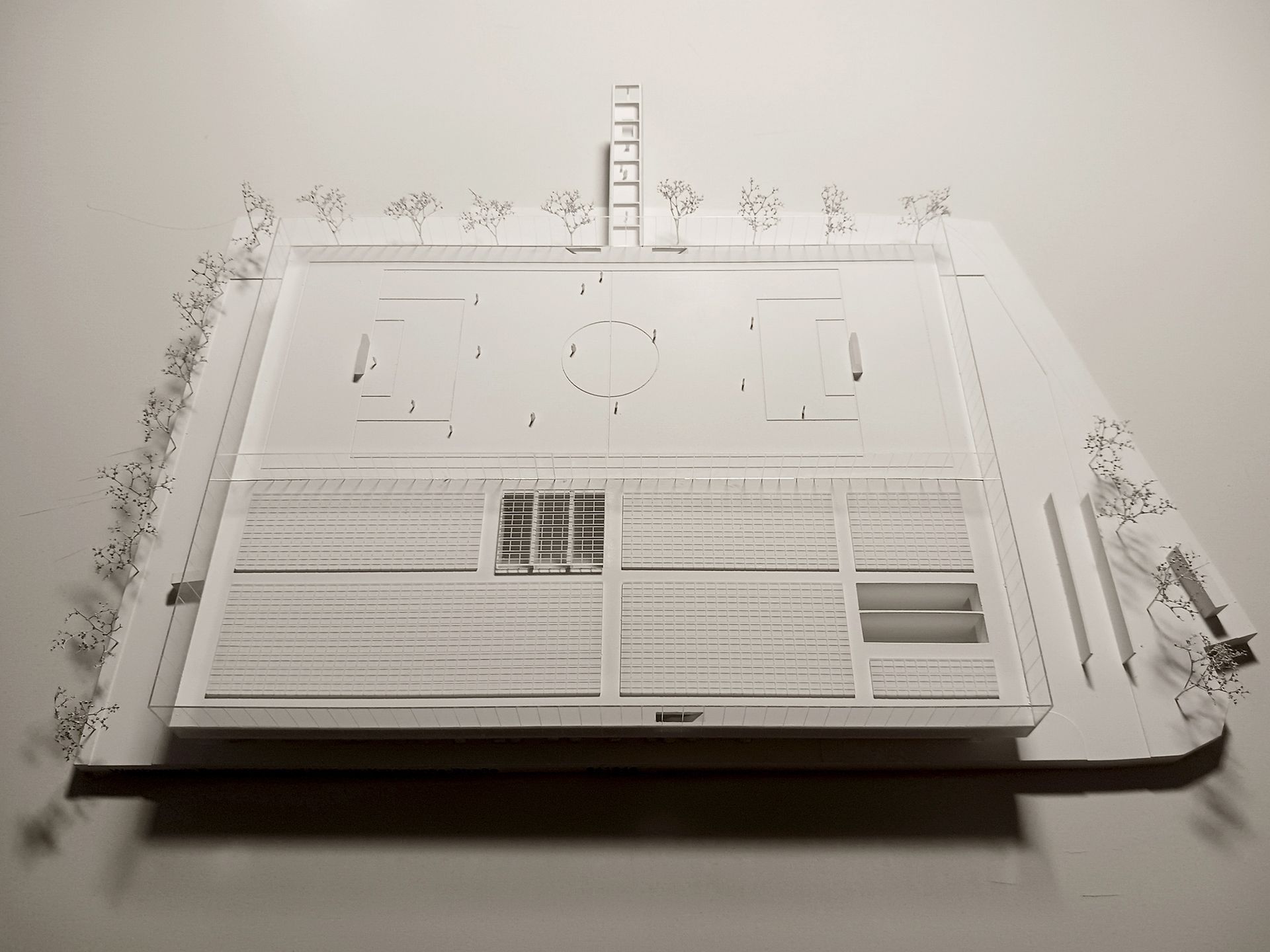100 under a soccer field
The new bus depot on Hedwig-Katschinka-Straße in Graz is committed to sustainability: with hydrogen-powered buses, renewable building materials, and a public open space on the roof. An added value for the whole city
100 under a soccer field
- Programme
Bus depot for 100 hydrogen-powered buses, including refueling technology, vehicle preparation, administration
- Size
1.110 m² GFA
- Status
EU-wide open, single-stage implementation competition 2023, recognition
- Place
Hedwig-Katschinka-Straße. 8020 Graz, Österreich
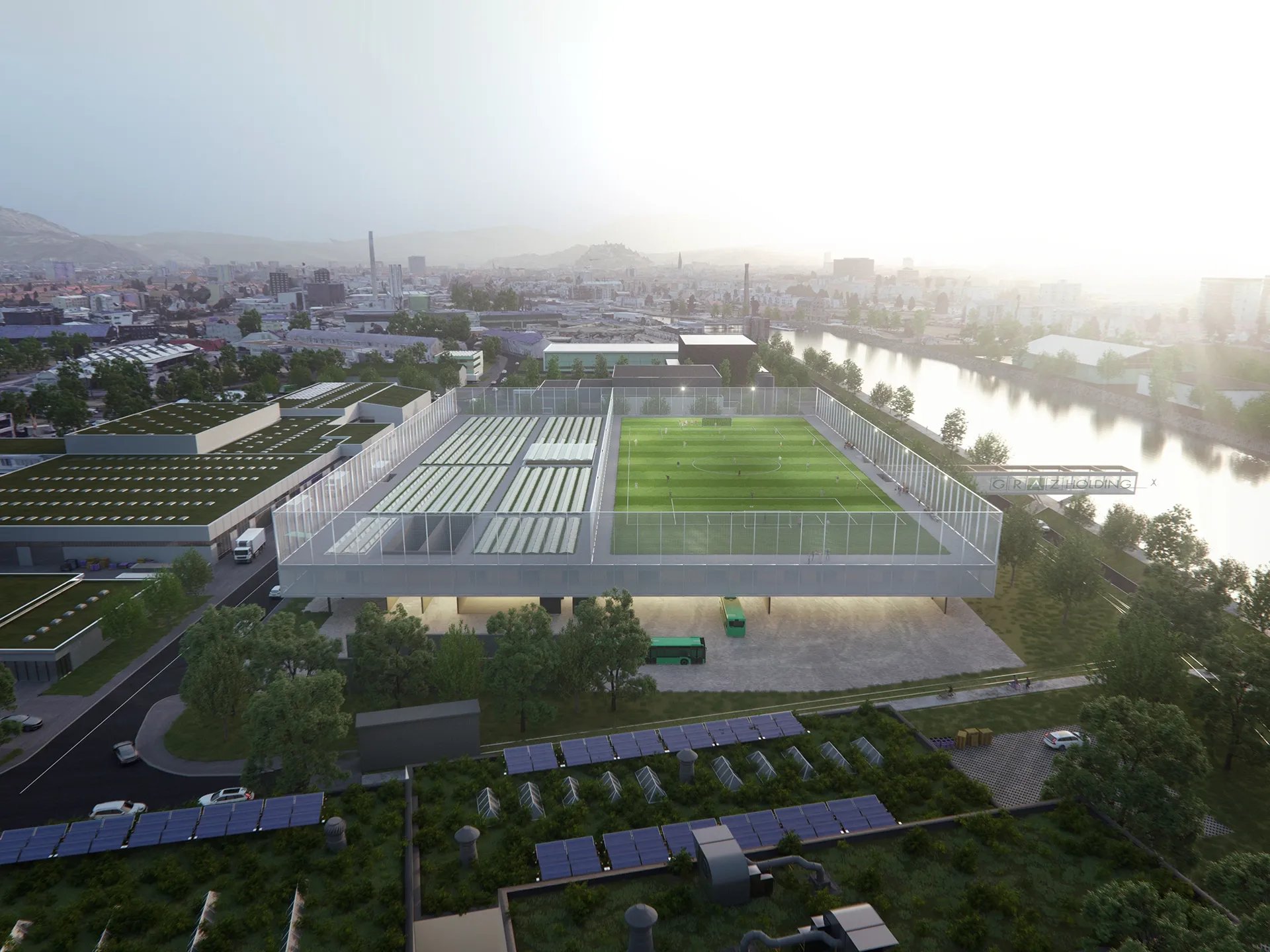
Attractive location near the Mur recreational area: The green roof of the bus depot, which was necessary anyway to reduce the degree of sealing, is being upgraded to a public open space
»We should redefine the relationship between public and private space: a project can be 100 percent public and 100 percent private at the same time.« Joost Meuwissen
Open space
Sustainable cities are cities of both/and: living, working, and leisure activities take place in spatial overlap with the aim of making intelligent use of existing resources (land, infrastructure, built space). Due to its attractive location near the Mur recreational area, the Hedwig-Katschinka-Straße bus depot offers ideal conditions for a contemporary response in this sense. The green roof of the bus depot, which is necessary anyway to reduce the degree of sealing, is upgraded to a public open space. This is realized as an area separate from the operational processes of the bus depot and can be reached via a connecting bridge from the banks of the Mur. Added value for the whole city.
The functional areas of the bus depot are tightly organized under one roof and partially integrated into the roof structure on the first floor. The public open space on the roof can be developed as a soccer field, tennis courts, ice rink, golf course, public park, etc., and offers the municipal utilities opportunities for additional income through rental. Changing rooms are planned on the first floor in the publicly accessible area of the circulation zone; optionally, public toilets can also be integrated into the roof structure here.
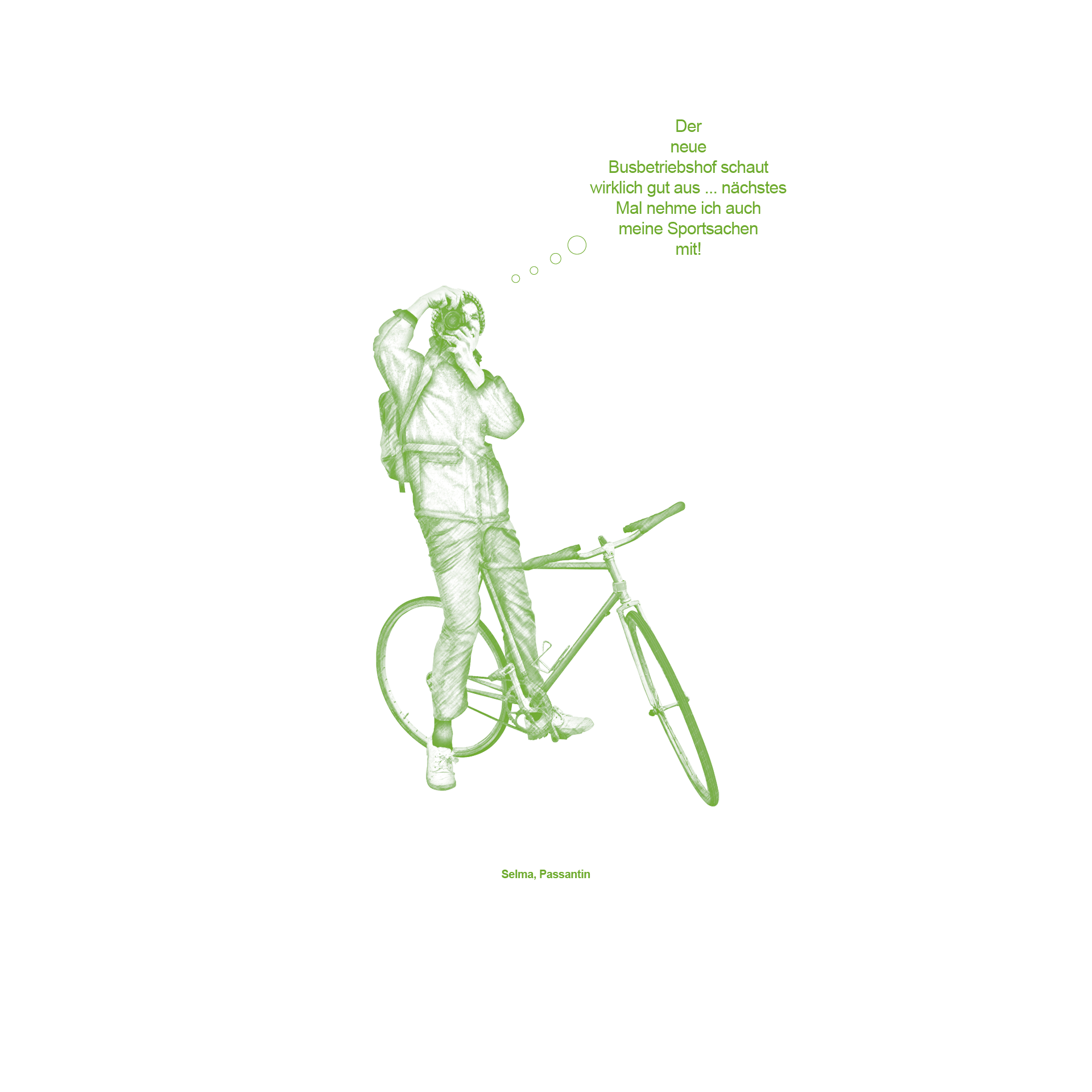
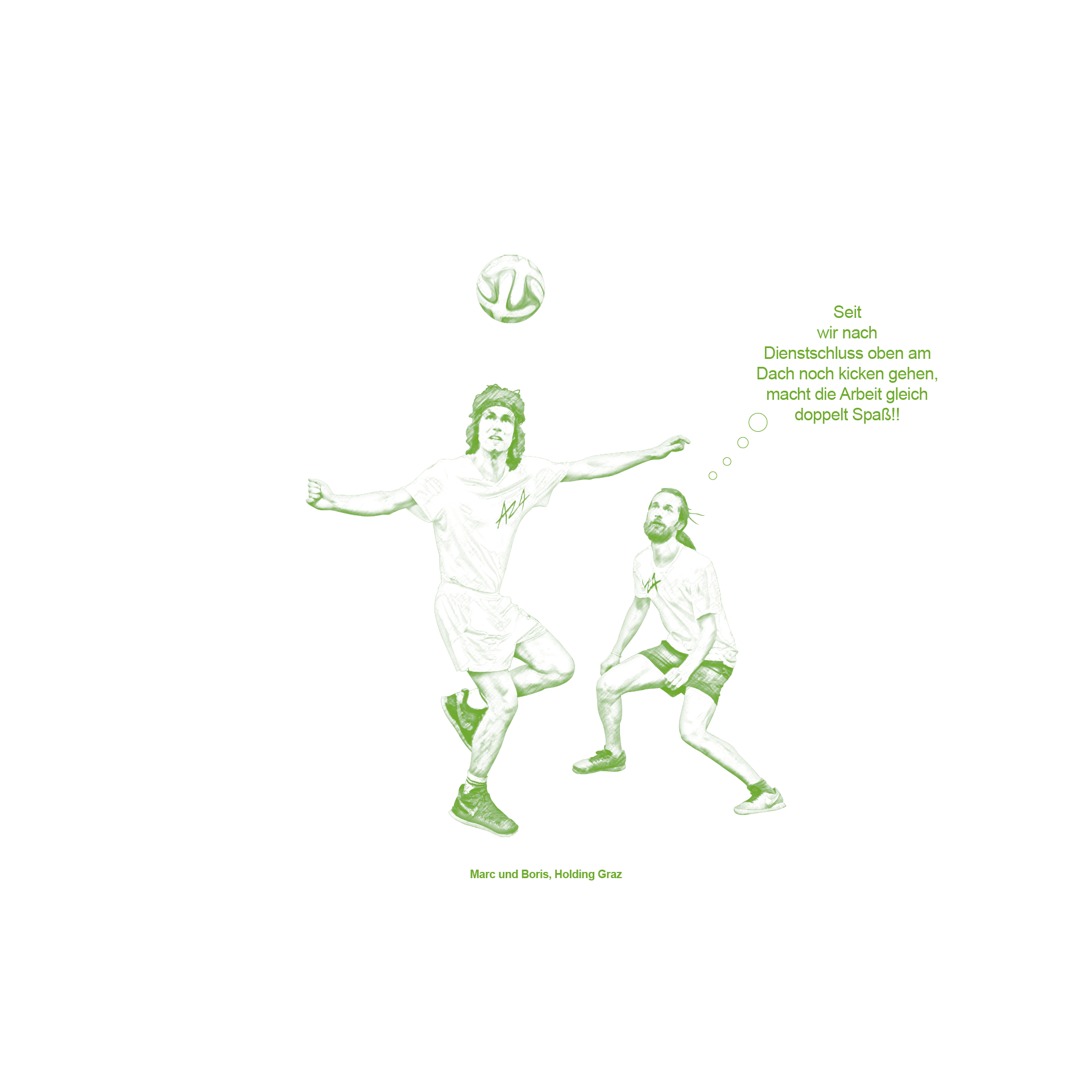

Selma, passerby
Sustainability
The compact design of the bus depot is intended to preserve as much green space as possible while also keeping construction and operating costs low. A stringent construction grid and a high degree of prefabrication of components further reduce construction costs and shorten construction time.
Wood is the predominant building material used in the simple roof construction (modified Vierendeel girder), but is also used on the first floor for walls, ceiling slabs, and interior fittings (windows, doors, acoustic ceilings). Concrete made from CO²-reduced cement and recycled aggregates is used on the ground floor. Renewable materials are generally used as insulation. In line with the circular economy, all structural elements are installed in such a way that they can be clearly separated.
Facade and roof
The facade design consists of exposed concrete on the ground floor and rear-ventilated facades (room enclosure) on the first floor (roof construction level), as well as steel cable nets that enclose the perimeter on all sides and continue into the roof level in the form of lightweight ball catch nets. The roof features a PV system on a green roof structure (3,250 m²) and a publicly accessible green space that also serves cooling and retention purposes.
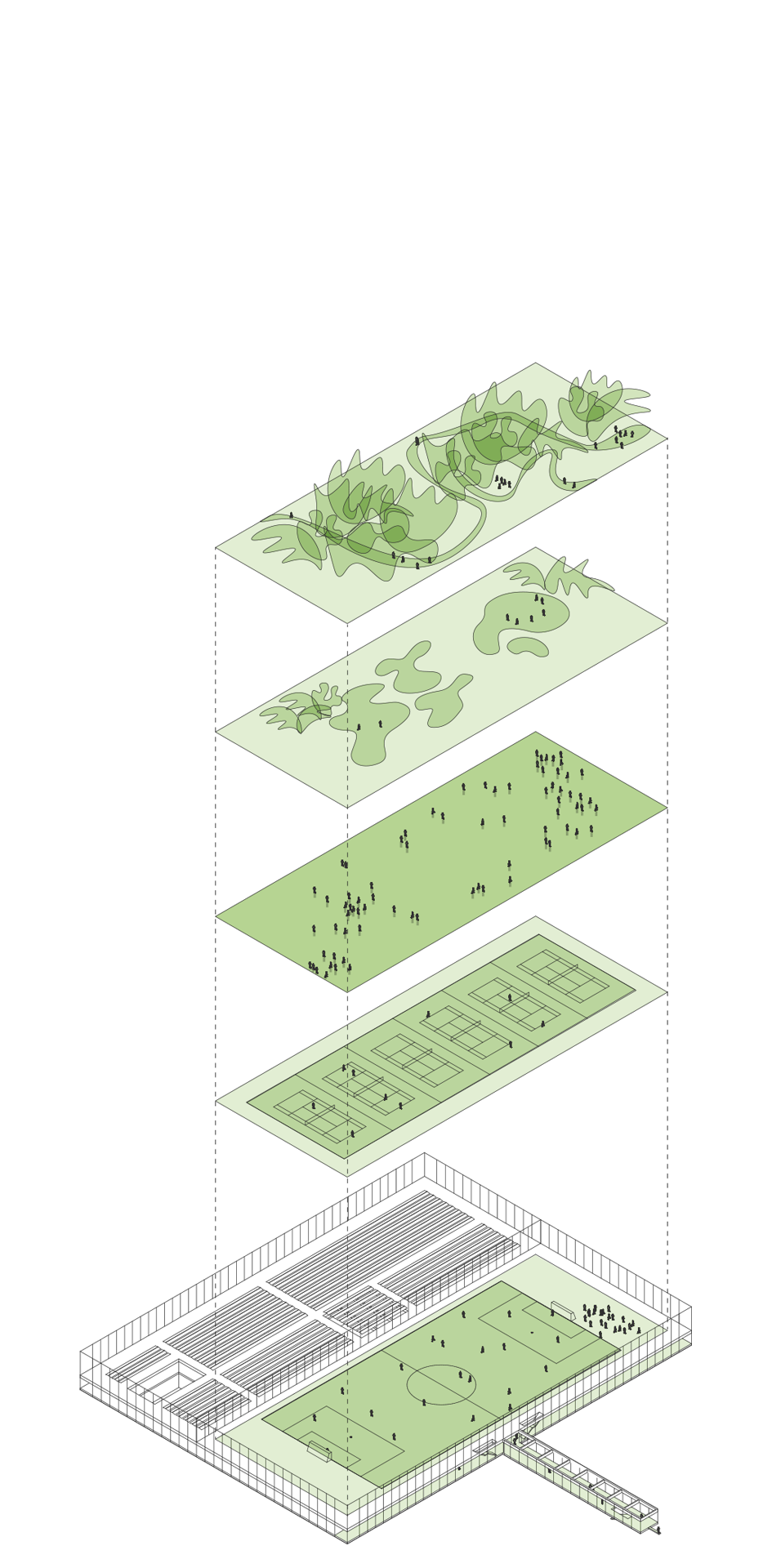
Roof usage options (from top to bottom): park, golf course, ice rink, tennis court, soccer field
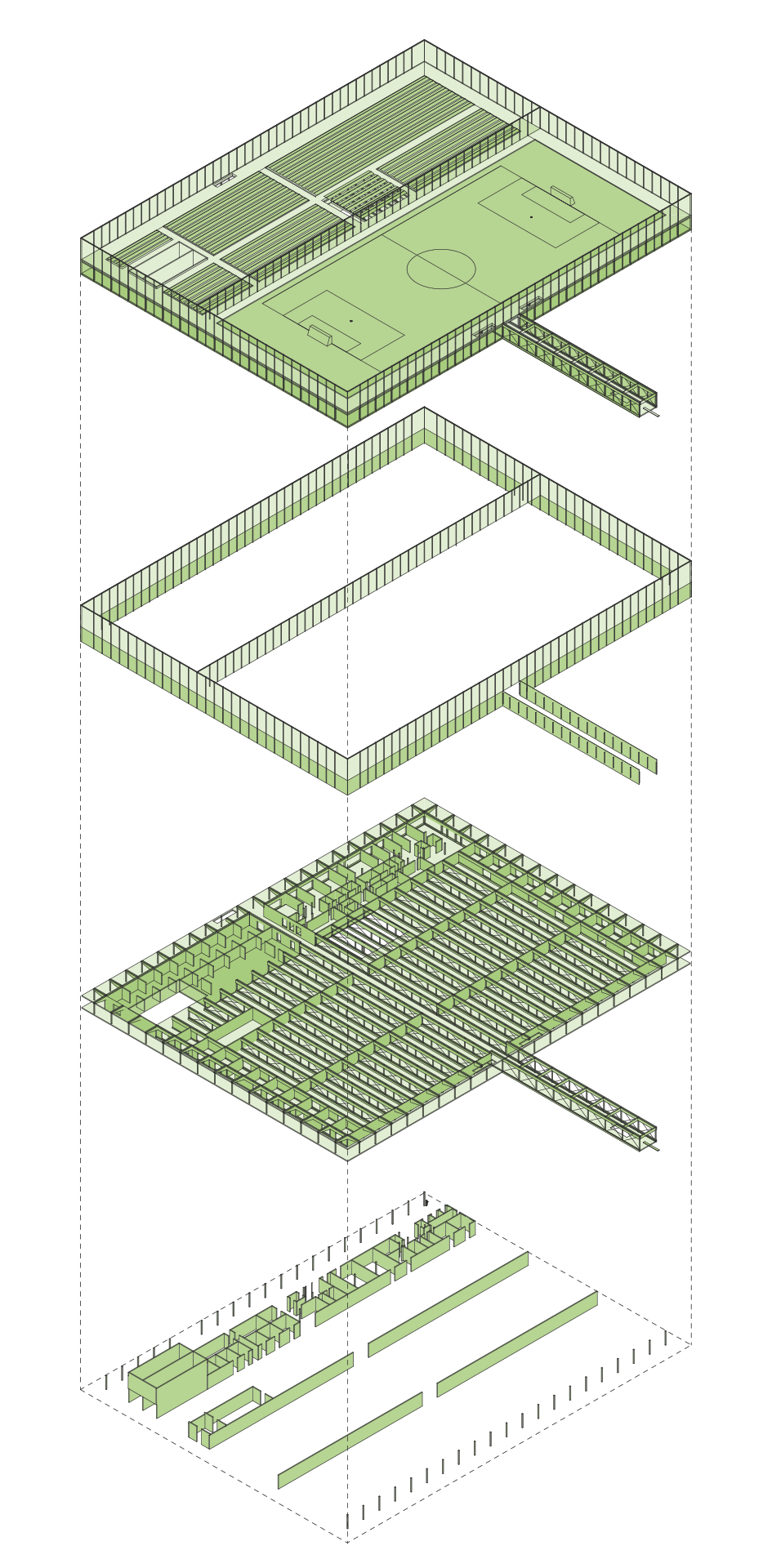
Statics and components
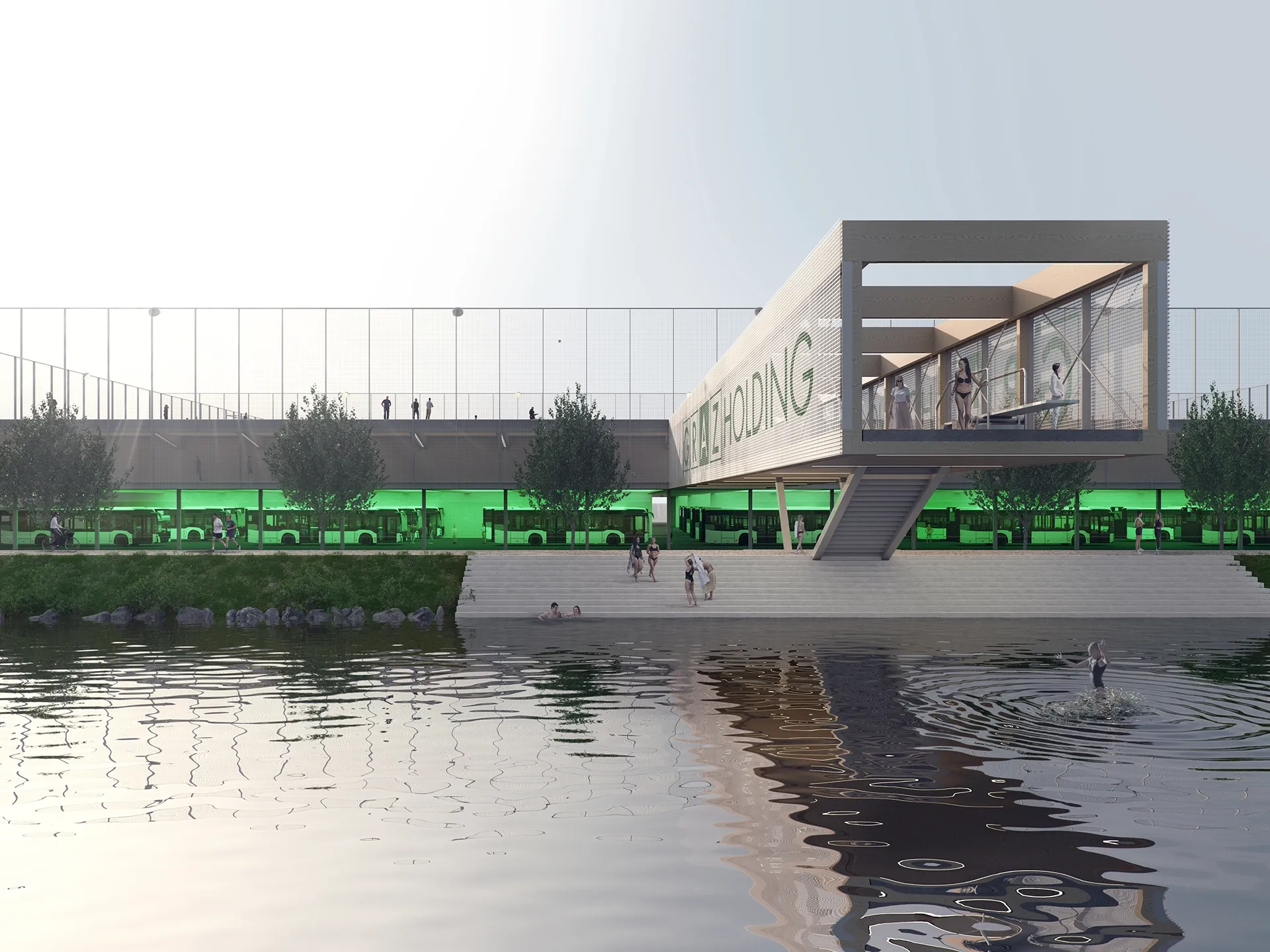
The open space on the roof of the bus depot is separate from the depot's operational activities and can be reached via a connecting bridge from the banks of the Mur. Below the bridge is a new access point to the banks of the Mur.
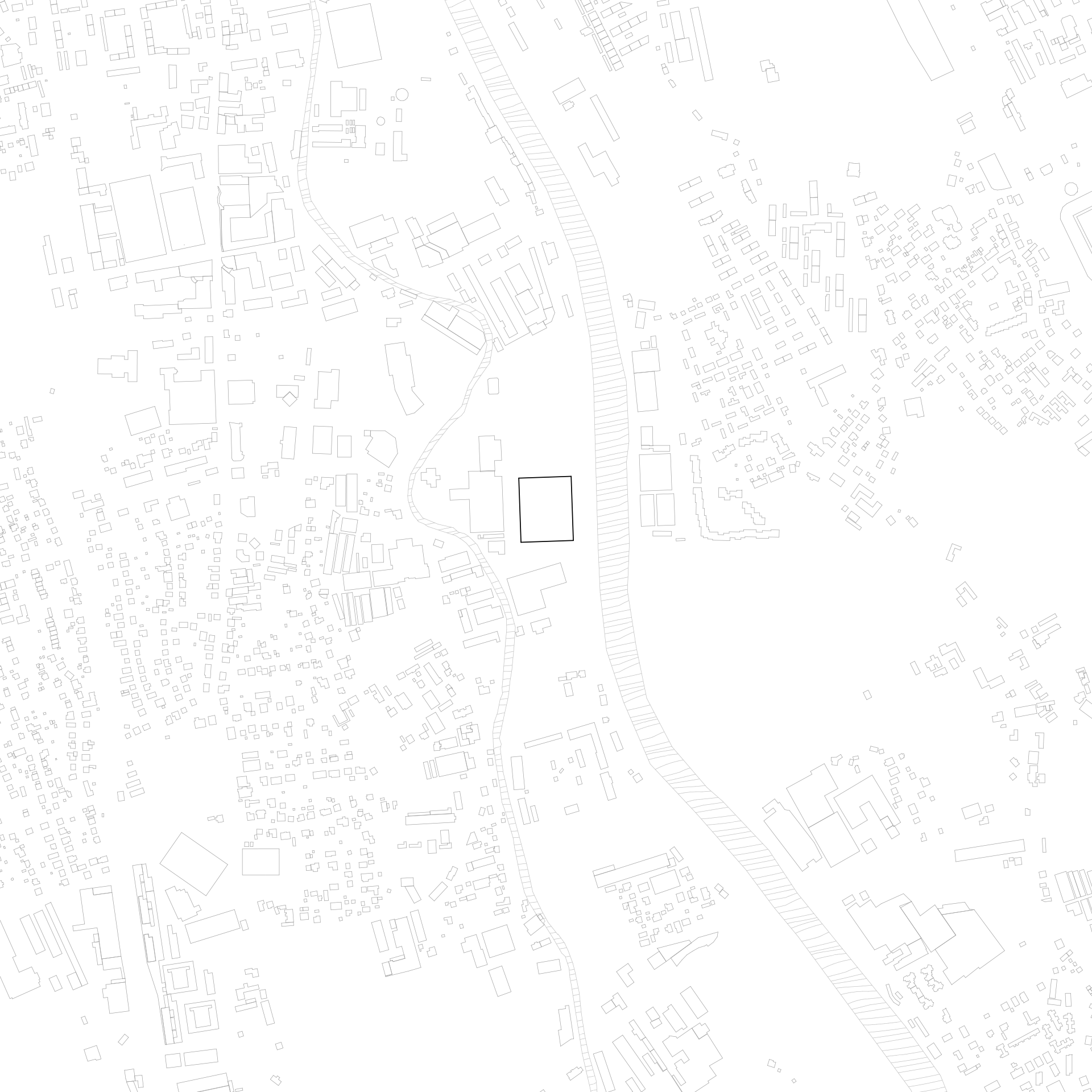
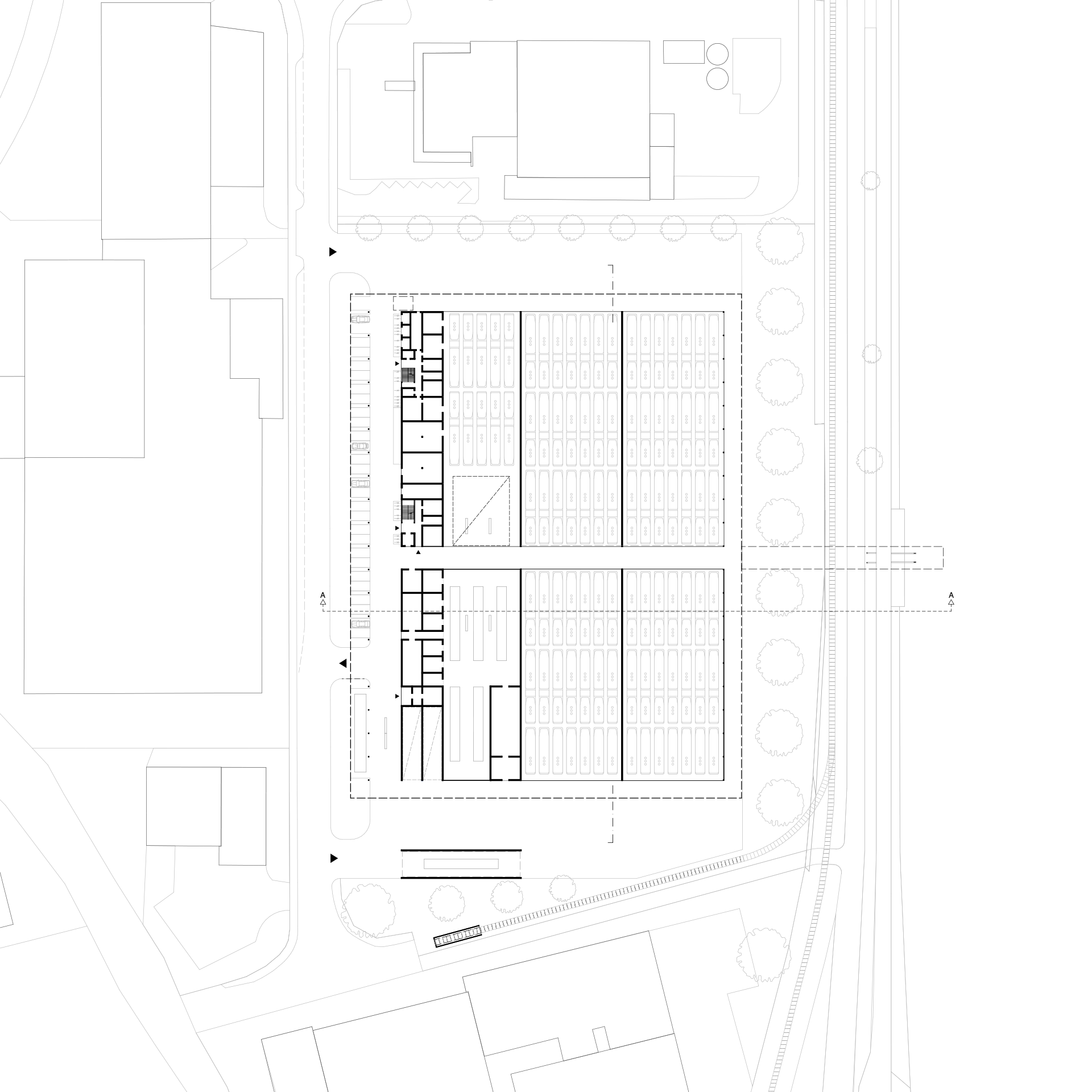
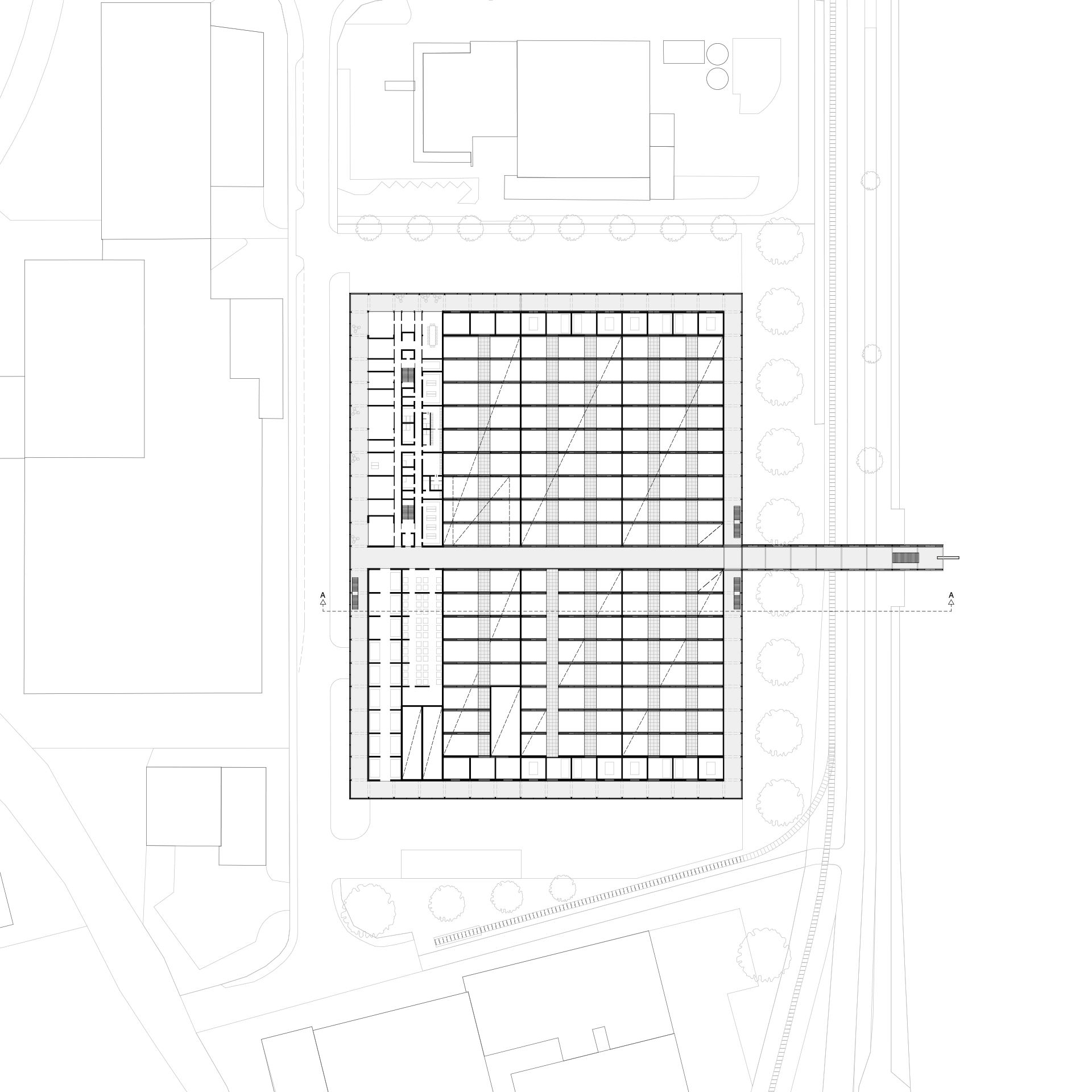
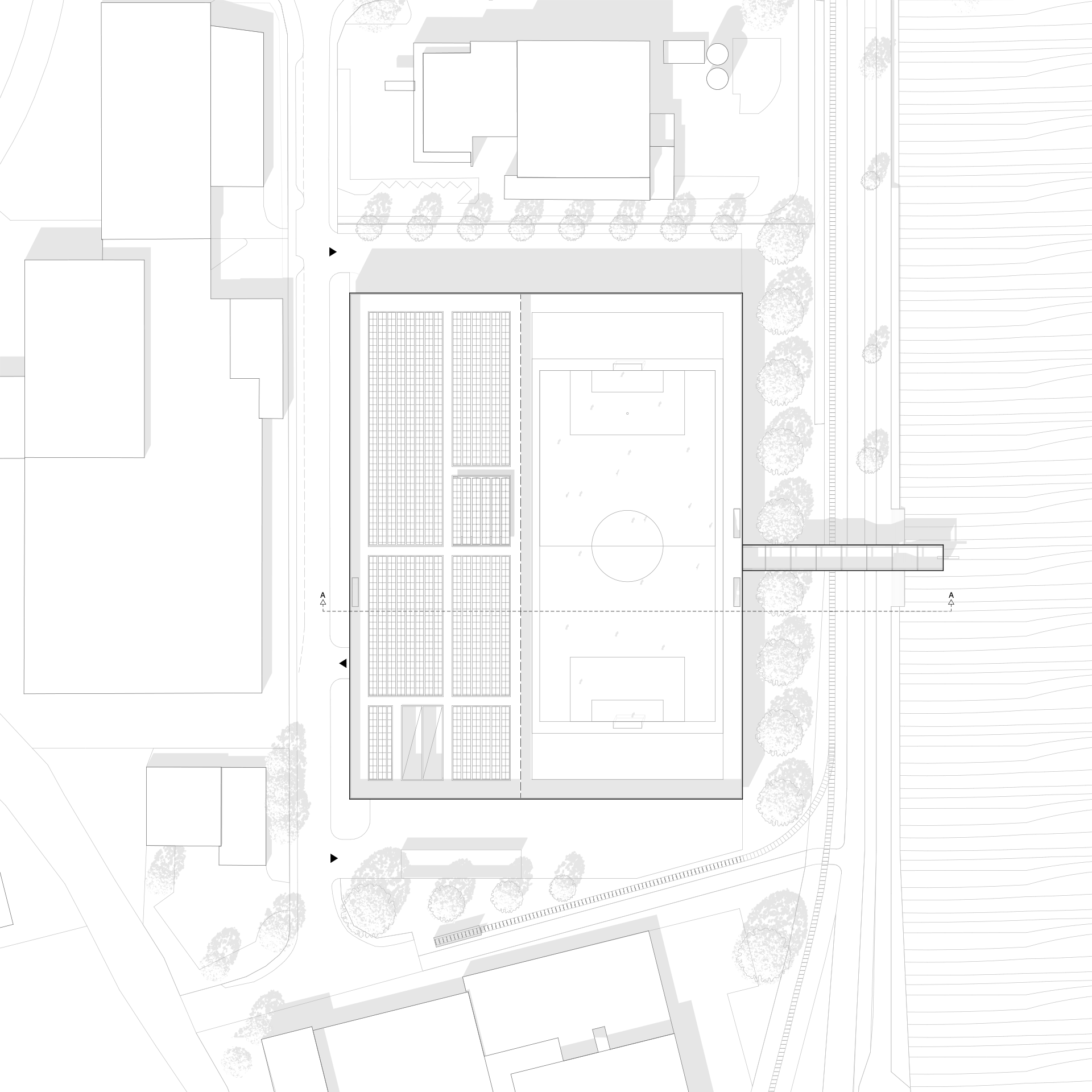
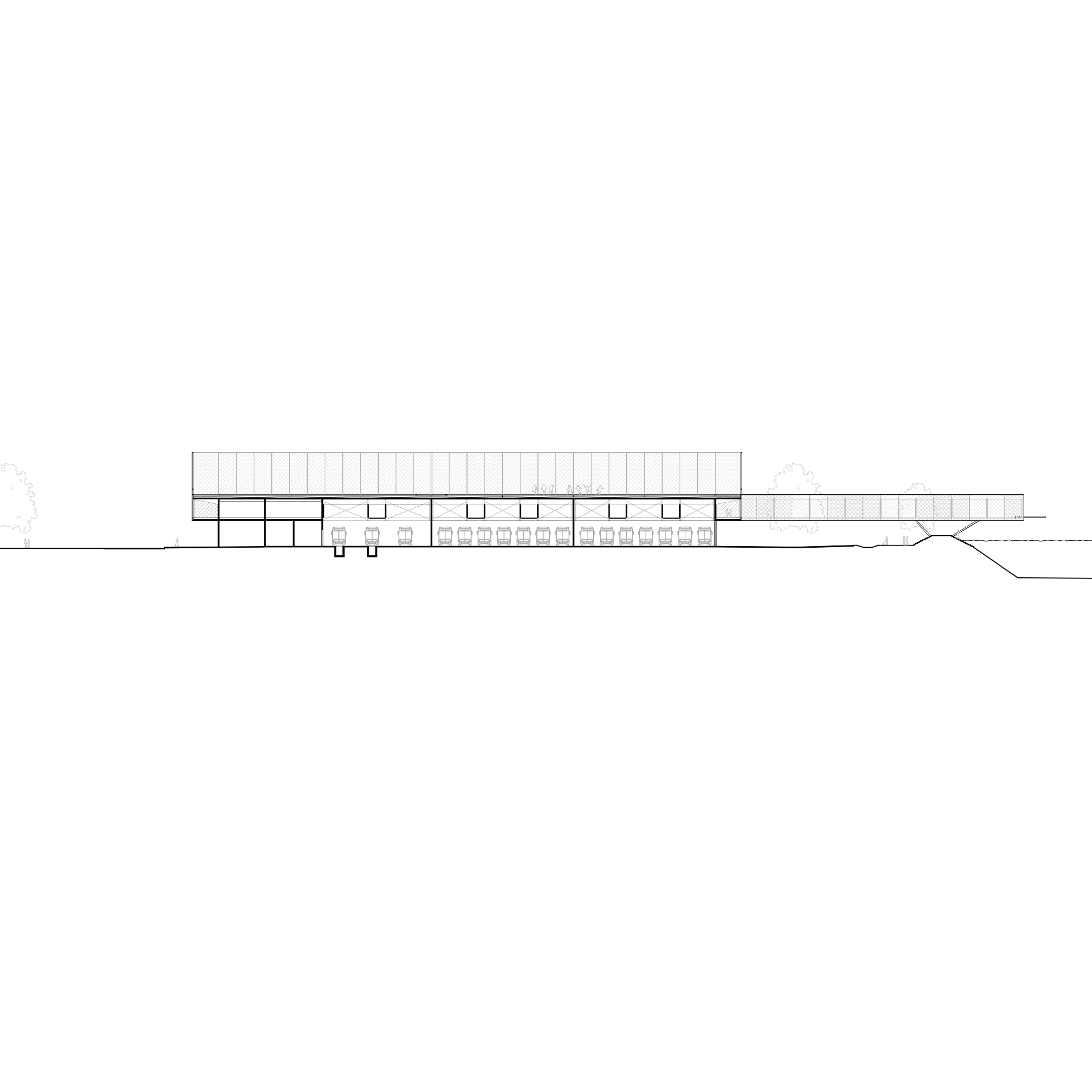
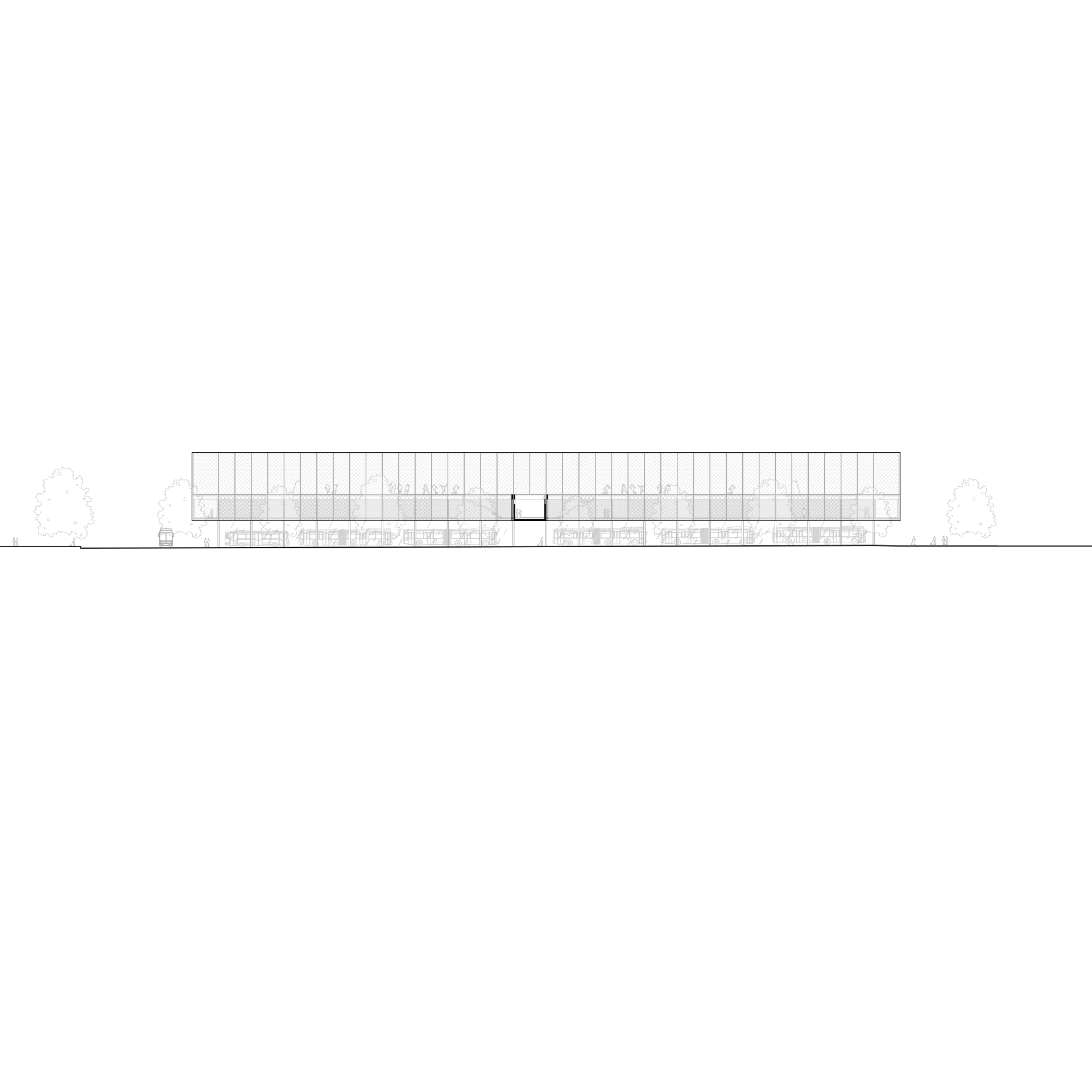
Site plan with building plot on the banks of the Mur River
